After winning their first championship in 50 years in 2021, the Bucks had a strong showing in the 2022 playoffs, but their attempt at a title defense was foiled in the second round against Boston. Khris Middleton was sidelined for that entire series due to an injury, which turned out to be a harbinger of the team's postseason health issues to come.
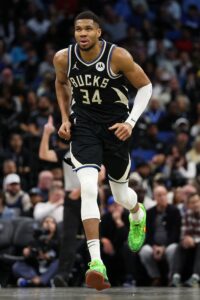 Milwaukee went 58-24 and claimed the top seed in the Eastern Conference ahead of the 2023 playoffs. In the team's first-round matchup with No. 8 Miami, superstar forward Giannis Antetokounmpo sustained a back injury early in Game 1, causing him miss the rest of that contest as well as the following two games. Antetokounmpo returned for Games 4 and 5, but he looked uncomfortable and was clearly not fully healthy. The Bucks were eliminated in five games, while the Heat made a surprising run to the NBA Finals.
Milwaukee went 58-24 and claimed the top seed in the Eastern Conference ahead of the 2023 playoffs. In the team's first-round matchup with No. 8 Miami, superstar forward Giannis Antetokounmpo sustained a back injury early in Game 1, causing him miss the rest of that contest as well as the following two games. Antetokounmpo returned for Games 4 and 5, but he looked uncomfortable and was clearly not fully healthy. The Bucks were eliminated in five games, while the Heat made a surprising run to the NBA Finals.
To that point, Milwaukee’s front office had largely stuck with the same core roster and coaching staff that won the title two years prior. But the disappointing early exit, which saw the Bucks blow multiple leads late in games, led to major changes in the 2023 offseason, including firing head coach Mike Budenholzer and trading away their starting backcourt (Jrue Holiday, Grayson Allen) and multiple draft assets to acquire Damian Lillard, Portland's all-time leading scorer.
Lillard's first season in Milwaukee was rocky, both in terms of his individual performance and the goings-on of the team. The Bucks fired their new coach -- Adrian Griffin -- despite a 30-13 start, then went 2-1 under interim coach Joe Prunty, but only had a 17-19 record with Doc Rivers -- Griffin's replacement -- at the helm.
Entering the 2024 playoffs, the Bucks had homecourt advantage in their first-round series vs. Indiana, but Antetokounmpo didn't play at all due to a calf injury, and Lillard missed a couple games as well due to a sore Achilles. They wound up being eliminated in six games by the upstart Pacers.
Milwaukee got off to a rough start in '24/25, going 2-8 in its first 10 games. But the Bucks steadied the ship to an extent over the course of the season, and finished with a nearly identical record as the season prior (48-34 vs. 49-33), setting up a first-round rematch with Indiana.
Unfortunately, Lillard was diagnosed with a blood clot in his right calf in late March. He made a very quick recovery, suiting up for Games 2 and 3 and playing surprisingly extended minutes considering the lengthy layoff. He didn't look anything close to his usual self though, and disaster struck in Game 4, when the seven-time All-NBA guard suffered a torn left Achilles tendon.
Despite a stellar showing from Antetokounmpo, the Bucks were eliminated in the first round for the third straight time, this time in five games.
Lillard is on a maximum-salary contract which is projected to pay him about $54.1MM in '25/26, with a $59.5MM player option for '26/27. He turns 35 years old next month and will likely miss all of next season.
The severity of Lillard's injury and Milwaukee's third consecutive first-round exit have led to rampant speculation about Antetokounmpo's future. While there has been no indication to this point that he'll end up requesting a trade, it also can't be ruled out in the coming months.
The Bucks' Offseason Plan
The Bucks are in a difficult bind this offseason. They have one of the greatest players in NBA history in the middle of his prime, a franchise icon who has finished no worse than fourth in MVP voting in each of the past seven seasons and doesn't turn 31 until December. Even without Lillard, Milwaukee should still be a playoff team in '25/26 as long as Antetokounmpo is healthy.

 Trajan Langdon replaced Troy Weaver as the head of basketball operations, while J.B. Bickerstaff took over as head coach just one year after Monty Williams received a six-year contract worth a reported $78.5MM. The Pistons' roster underwent some significant changes too, with
Trajan Langdon replaced Troy Weaver as the head of basketball operations, while J.B. Bickerstaff took over as head coach just one year after Monty Williams received a six-year contract worth a reported $78.5MM. The Pistons' roster underwent some significant changes too, with  While the end result of the 2024/25 season was another first-round playoff exit, there are a couple important reasons why it would be inaccurate to say the year was more of the same for the Lakers.
While the end result of the 2024/25 season was another first-round playoff exit, there are a couple important reasons why it would be inaccurate to say the year was more of the same for the Lakers. The Magic committed to a rebuild in '20/21 after being stuck in mediocrity for a few years, trading away
The Magic committed to a rebuild in '20/21 after being stuck in mediocrity for a few years, trading away 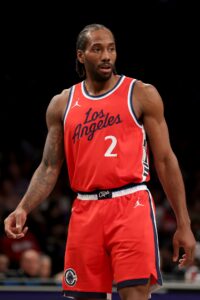 The version of the Clippers built around Leonard and George was a perennial championship threat when those two were on the court. However, that happened far less frequently than the organization had hoped, with one star or the other often sidelined due to an injury by the time the club was facing postseason elimination. During the five years the two L.A. natives spent together as Clippers, the team won just three playoff series -- and all of those victories came in 2020 and 2021.
The version of the Clippers built around Leonard and George was a perennial championship threat when those two were on the court. However, that happened far less frequently than the organization had hoped, with one star or the other often sidelined due to an injury by the time the club was facing postseason elimination. During the five years the two L.A. natives spent together as Clippers, the team won just three playoff series -- and all of those victories came in 2020 and 2021.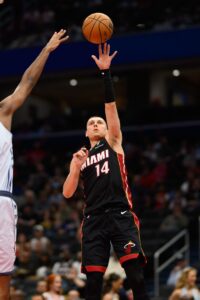 Some players responded well to Riley's candor. After being dubbed "fragile" by the longtime Heat president last May,
Some players responded well to Riley's candor. After being dubbed "fragile" by the longtime Heat president last May, 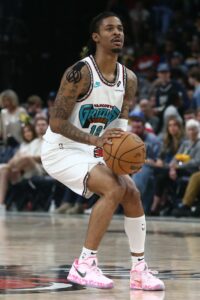 Entering '24/25, the Grizzlies had reason to believe that a bounce-back year was on tap. They weren't bringing back all the key elements of those 50-win teams -- forward
Entering '24/25, the Grizzlies had reason to believe that a bounce-back year was on tap. They weren't bringing back all the key elements of those 50-win teams -- forward 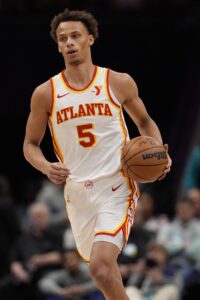
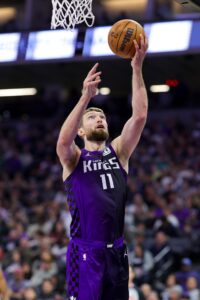 It was a step back, but only a small one -- the club stumbled more significantly in 2024/25, losing 19 of its first 32 games, which cost Brown his job and led to a trade request from star point guard
It was a step back, but only a small one -- the club stumbled more significantly in 2024/25, losing 19 of its first 32 games, which cost Brown his job and led to a trade request from star point guard  Ball ultimately made his return to the court in the fall of 2024, but the Bulls had thrown in the towel on the previous iteration of their roster a few months earlier, having traded away key veterans like DeRozan and Caruso while acquiring a new point guard of the future in
Ball ultimately made his return to the court in the fall of 2024, but the Bulls had thrown in the towel on the previous iteration of their roster a few months earlier, having traded away key veterans like DeRozan and Caruso while acquiring a new point guard of the future in